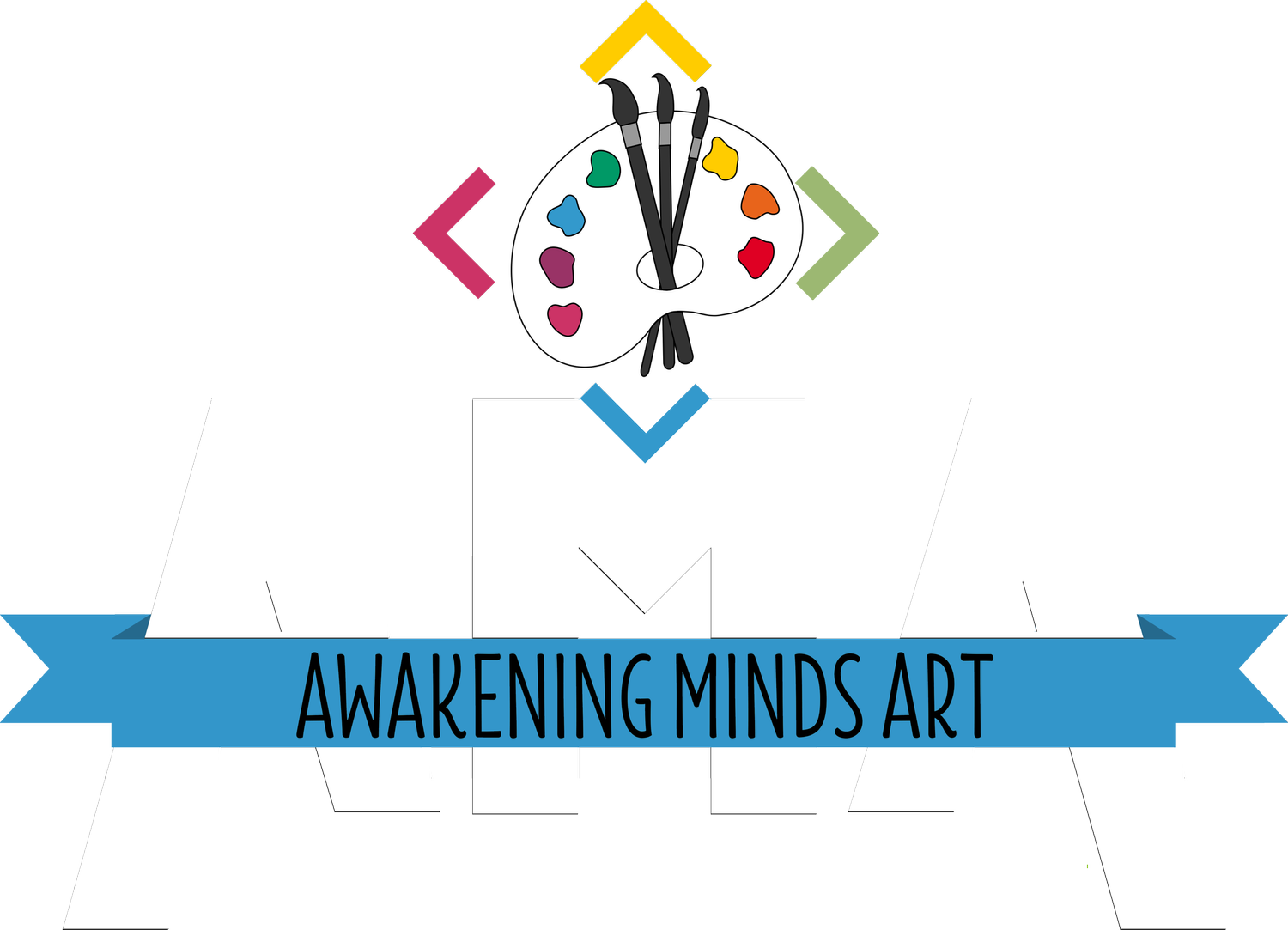art & the brain
Originally posted on 5/30/2023
By Tamera Rooney - Owner of Red Tornado Art Productions
Board Member of Awakening Minds Art
Art positively impacts the brain in several ways. For example, it can reduce stress, increase emotional regulation and self-awareness, and improve cognitive function, such as memory and attention. Engaging with art can also stimulate the release of dopamine, a neurotransmitter associated with pleasure, motivation, and reward, and also increase the activity in brain regions associated with empathy and understanding of others.
Personally, art is a source of solace and personal growth for me. Making art allows me to navigate and process my own experiences, emotions, and challenges. It becomes a therapeutic outlet, enabling me to find clarity, healing, and a sense of purpose. Ultimately, art is an integral part of my identity. I can literally feel my brain become quiet when making art.
When I pause while creating, I find that I contemplate my subject in a deeper, more satisfying way. I was recently working on a painting of flowers using new, metallic watercolors. While stepping back to look at the piece, I realized that the flowers I painted do not exist. They existed only in my brain. And my brain felt happy!
Creating art can have therapeutic benefits, such as self-expression and emotional release.
Art is used in many different ways in daily life. Some examples include:
Decorative art: Art is used to decorate homes, offices, and public spaces. Paintings, sculptures, and other art forms are used to add visual interest and beauty to these spaces.
Entertainment: Art is also used as entertainment, such as in music, theater, and film. These mediums can tell stories, evoke emotions, and provide entertainment.
Education: Art is often used as a tool for education, particularly in teaching children. For example, art classes can teach children about color, form, and composition, as well as skills such as fine motor control and creativity.
Advertising and Marketing: Art is used to create visual elements in advertising, graphic design, and marketing materials.
Art therapy uses art-making as a means of self-expression and reflection. In addition, it is used to address mental health concerns such as anxiety, depression, and trauma.
Expression of ideas, emotions and culture: Art is a medium to express ideas, emotions and culture. It can be used to preserve a particular culture and its history, to express political views, to show love, to send a message, to make a statement and many more.
Yes, art is indeed everywhere in our daily lives. It can be found in many forms and mediums, from traditional art forms, such as painting and sculpture, to more modern forms, such as digital and street art. It can be found in museums and galleries, but also in public spaces, advertising, and even on social media.
Art is in our lives every day. Art is also present in objects and architecture, in product design, fashion and graphic design, it's in the music we listen to, the books we read, the movies and TV shows we watch.
Additionally, art can be found in the way we express ourselves and communicate with others, whether through verbal language, body language, or other forms of self-expression. Even our daily routines can be seen as a form of performance art.
Art has the power to shape our experiences, change how we see the world, and connect us with each other. It's an integral part of human culture and society, and it's all around us. When an individual engages with art by creating, viewing, or studying it, several things happen in the brain.
Engaging with art can stimulate the release of dopamine, a neurotransmitter associated with pleasure, motivation, and reward. This can lead to feelings of happiness, excitement, and satisfaction.
Creating art can activate the brain's default mode network (DMN), a network of brain regions active when the mind is at rest and not focused on the outside world. This network is associated with self-reflection, imagination, and internal thoughts, and it's also associated with psychological functions such as memory, emotion and social cognition.
Engaging with art can increase activity in brain regions associated with empathy and understanding of others. Doing art can help individuals better understand and relate to other people's perspectives and emotions.
Viewing art can also activate the brain's visual processing areas responsible for analyzing and interpreting visual information. Simply looking at art can help to improve visual perception, attention, and memory.
For those creating art, it can also have a therapeutic effect, such as self-expression, emotional release, and stress reduction. In addition, it can help to develop self-esteem, self-awareness, and self-confidence.
As a freelance marketing lady, I am lucky to be able to create art every day! My brain would be very, very different were it not for artmaking!
-Tamera Rooney


